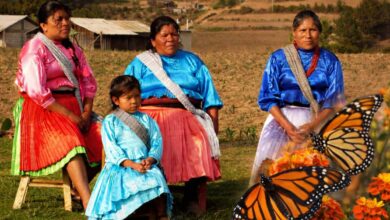AMLO’s Proposal Against Extreme Poverty Is Not As Utopian As It Seems
The Mexican president assured that if billionaires, companies, and countries cooperate, at least one trillion dollars could be collected. How viable is the idea raised by AMLO against poverty?.

The president of Mexico surprised all attendees during the UN Security Council session by revealing that his country has a planned project that would seek to eradicate extreme poverty in the world. Photo: TW-lopezobrador_
LatinAmerican Post | Christopher Ramírez Hernández
Escucha este artículo
Leer en español: Propuesta de AMLO contra la pobreza extrema no es tan utópica como parece
The president of Mexico, Andrés Manuel López Obrador (better known as AMLO) surprised all attendees during the session of the Security Council of the United Nations Organization (UN), which took place on November 9, at reveal that his country has planned a project with which he would seek to eradicate extreme poverty in the world.
The "World Program for Fraternity and Well-being", according to AMLO, is a strategy that seeks to guarantee "the right to a decent life for 750 million people who survive on less than two dollars a day."
Also read: AMLO Helps Break The Diplomatic Siege Against Maduro
He also explained during his speech how it would be possible to raise at least one trillion dollars that would be distributed equitably (not equally) among the most vulnerable populations in the world:
“The collection of a voluntary, annual contribution of 4 percent of their fortunes to the thousand richest people on the planet; a similar contribution by the thousand most important private corporations for their value in the world market, and a cooperation of 0.2 percent of the GDP of each one of the member countries of the Group of 20 (G20)”.
Thus, for example, in the case of Mexico, which is one of the countries that are part of said G20, AMLO explained during an intervention in the National Palace that, according to the current figures of its gross domestic product, his government would have to disburse about 60 billion Mexican pesos (almost 3 billion dollars).
He also showed a detail that he did not reveal during his speech at the UN: if the plan were carried out as planned, the trillion dollars raised would be enough to give four dollars a day to the people who need it most on the planet.
“The World Bank and the International Monetary Fund could collaborate in the creation of the required structure and from next year make a census of the poorest in the world and once the target population has been defined in each country, begin to disperse the resources for granting pensions for older adults, children with disabilities, scholarships for students, support for farmers and young people who work as apprentices in productive activities as well as to deliver free vaccines and medicines, "added the Mexican President.
How viable is this AMLO proposal?
To begin with, it must be clarified that ending extreme poverty in the world is not a utopian situation as many belief. In fact, the UN has pointed out on several occasions that its programs have managed to reduce the percentage of people living on less than two dollars from 36% in 1990 to 10.7% in 2015.
"This shows us that ending extreme poverty is within our reach, although the rate of decline has slowed down," said the international entity through a report published on its website.
For its part, the Brookings Institution, a US agency specialized in public policy research, ratified the validity of López Obrador's idea, assuring that with only $ 95 billion, extreme poverty could be eradicated in the world.
For its part, the Food and Agriculture Organization of the United Nations (FAO) added that with a budget that ranges between 39 thousand and 50 billion dollars, the problem of growing food could be solved in a sustainable way, which would guarantee continuous production of edible products throughout the world.
Likewise, the journal The Nature Conservancy explains in one of its published studies that it is also important to have money that guarantees the preservation of nature and biodiversity because without the environment there is no land on which to grow food, which would make it useless to have money to invest but no products to buy. In that case, the magazine assures that at least 600 billion dollars per year would be necessary.
In this way, doing the math, to eradicate hunger in the world (which would be a gigantic step to eradicate poverty) would require an investment of at least 745 billion dollars. Taking into account that AMLO's idea guarantees a trillion dollars, that leaves a surplus of 255 billion dollars that would continue to be useful in other public policies such as housing or education.
Even with this, the Mexican government must know how to sell its project very well before the UN, taking into account that the approval of this type of strategy does not depend so much on what the countries can do from the institutional framework, but on the political will that they demonstrate. to make this initiative a reality.
Recently, the executive director of the UN World Food Program, David Beasley told Elon Musk, one of the richest men in the world, now with 6.6 billion dollars you can end hunger in 2022. The organization that is part of the UN published a detailed plan explaining how the money will be invested and will lift 42 million people out of hunger.




